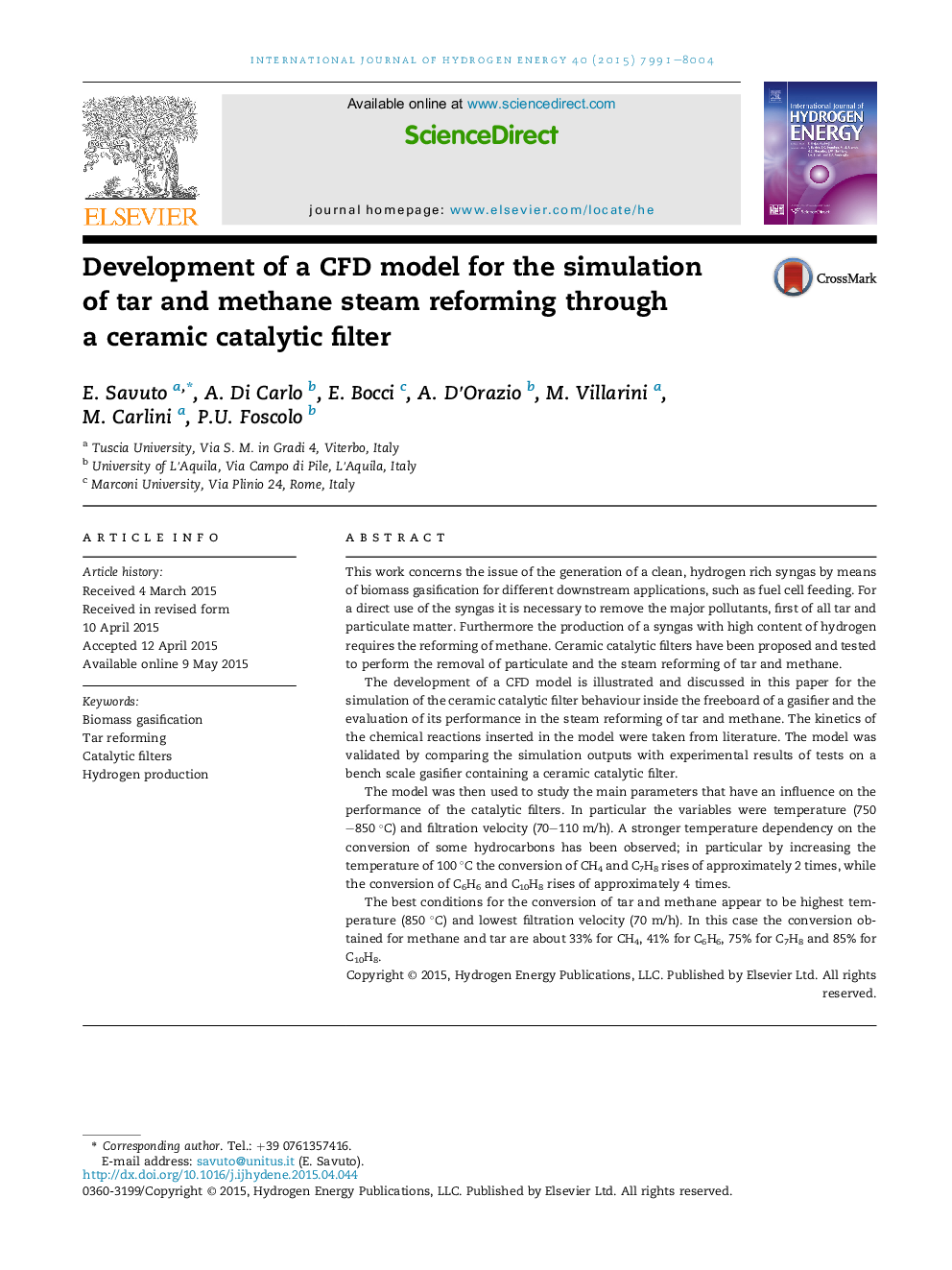| کد مقاله | کد نشریه | سال انتشار | مقاله انگلیسی | نسخه تمام متن |
|---|---|---|---|---|
| 1270797 | 1497448 | 2015 | 14 صفحه PDF | دانلود رایگان |

• Simulation of the performance of catalytic ceramic filters by new detailed CFD model.
• Model validated by experimental results from bench and industrial scale reactors.
• Temperature highly affects tar and CH4 conversion, filtration velocity-fv slightly.
• Low temperatures cause lower reaction rates in the upper part of the candle.
• Highest conversions at T = 850 °C, fv = 70 m/h: CH4 33%, C6H6 41%, C7H8 75%, C10H8 85%.
This work concerns the issue of the generation of a clean, hydrogen rich syngas by means of biomass gasification for different downstream applications, such as fuel cell feeding. For a direct use of the syngas it is necessary to remove the major pollutants, first of all tar and particulate matter. Furthermore the production of a syngas with high content of hydrogen requires the reforming of methane. Ceramic catalytic filters have been proposed and tested to perform the removal of particulate and the steam reforming of tar and methane.The development of a CFD model is illustrated and discussed in this paper for the simulation of the ceramic catalytic filter behaviour inside the freeboard of a gasifier and the evaluation of its performance in the steam reforming of tar and methane. The kinetics of the chemical reactions inserted in the model were taken from literature. The model was validated by comparing the simulation outputs with experimental results of tests on a bench scale gasifier containing a ceramic catalytic filter.The model was then used to study the main parameters that have an influence on the performance of the catalytic filters. In particular the variables were temperature (750–850 °C) and filtration velocity (70–110 m/h). A stronger temperature dependency on the conversion of some hydrocarbons has been observed; in particular by increasing the temperature of 100 °C the conversion of CH4 and C7H8 rises of approximately 2 times, while the conversion of C6H6 and C10H8 rises of approximately 4 times.The best conditions for the conversion of tar and methane appear to be highest temperature (850 °C) and lowest filtration velocity (70 m/h). In this case the conversion obtained for methane and tar are about 33% for CH4, 41% for C6H6, 75% for C7H8 and 85% for C10H8.
Journal: International Journal of Hydrogen Energy - Volume 40, Issue 25, 6 July 2015, Pages 7991–8004